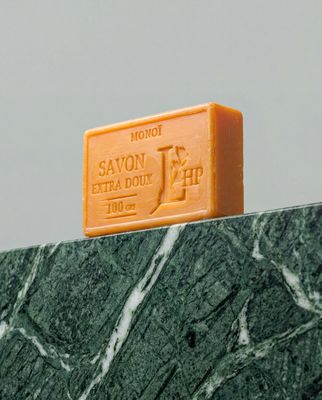Everything about the color Hazelnut
The meaning of the color hazelnut and color combinations to inspire your next creation.
Browse images in the color hazelnut
What color is hazelnut?
Hazelnut is a warm, earthy shade reminiscent of the outer shell of a hazelnut. It combines elements of brown and beige, offering a soft, neutral tone that is both comforting and versatile.
What are similar colors to hazelnut?
For variations within the same warm and earthy spectrum as hazelnut, consider:
- Beige (#F5F5DC) shares hazelnut's neutral undertones, providing a light and airy feel.
- Taupe (#483C32) offers a darker, more muted version of hazelnut with a hint of gray.
- Tan (#D2B48C) closely resembles hazelnut with its sandy, sun-kissed hue.
- Camel (#C19A6B) provides a slightly richer, deeper tone than hazelnut, with a golden undertone.
- Mocha (#967969) is a darker, more chocolatey version of hazelnut, adding depth and richness.
What color goes with hazelnut?
To complement hazelnut's warm, neutral tones, consider pairing it with:
- Sage (#BCB88A) offers a soft, muted green that complements hazelnut's earthy warmth.
- Peach (#FFE5B4) matches with hazelnut's warm, sunny tone and offers a gentle contrast.
- Ivory (#FFFFF0) provides a clean, classic contrast that enhances hazelnut's warmth.
- Lavender (#E6E6FA) adds a touch of elegance with its soothing, purple-tinged hue.
- Mint (#98FF98) offers a crisp, cool contrast that looks good with the warmth of hazelnut.
What color conflicts with hazelnut?
To avoid clashing with hazelnut's warm, earthy tones, consider avoiding:
- Black (#000000) can overpower the subtle warmth of hazelnut.
- White (#FFFFFF) risks washing out the gentle, earthy quality of hazelnut.
- Gray (#808080) could dull the vibrancy of hazelnut.
- Cream (#FFFDD0) may blend too closely, losing contrast with hazelnut.
- Charcoal (#36454F) is too dark and heavy, overshadowing hazelnut's softness.
What does the color hazelnut represent?
Hazelnut represents warmth, comfort, and a connection to nature, often evoking feelings of coziness and stability. In color psychology, hazelnut is associated with simplicity and reliability, providing a sense of grounding and calm. In art and design, hazelnut is used to create a neutral backdrop that enhances other colors, adding warmth without overwhelming the palette. Its versatility makes it a popular choice in interior design for creating inviting and harmonious spaces.
What's the history of hazelnut?
The color hazelnut derives its name from the nut of the hazel tree, known for its brown shell and creamy interior. Historically, the term has been used to describe various shades of brown and beige, reflecting the natural, earthy tones of the nut. In modern times, hazelnut has become a popular choice in fashion and interior design for its ability to blend seamlessly with a wide range of colors. Its warm, neutral hue is favored for creating cozy, inviting spaces that feel both timeless and contemporary.
Color Variations
Shades
Tints
Hues
Color Palettes
Monochromatic
Complementary
Analogous
Triadic
Tetradic
Images with hazelnut color
Color Conversions
#D3B183rgb(211, 177, 131)rgb(83%, 69%, 51%)0, 16, 38, 17hsl(35, 48%, 67%)35, 38, 83#D3B18374, 6, 2847, 47, 2874, 29, 7811010011, 10110001, 10000011Color(red: 0.8274509803921568, green: 0.6941176470588235, blue: 0.5137254901960784)UIColor(red: 0.8274509803921568, green: 0.6941176470588235, blue: 0.5137254901960784, alpha: 1.0)Color(0xFFD3B183)










